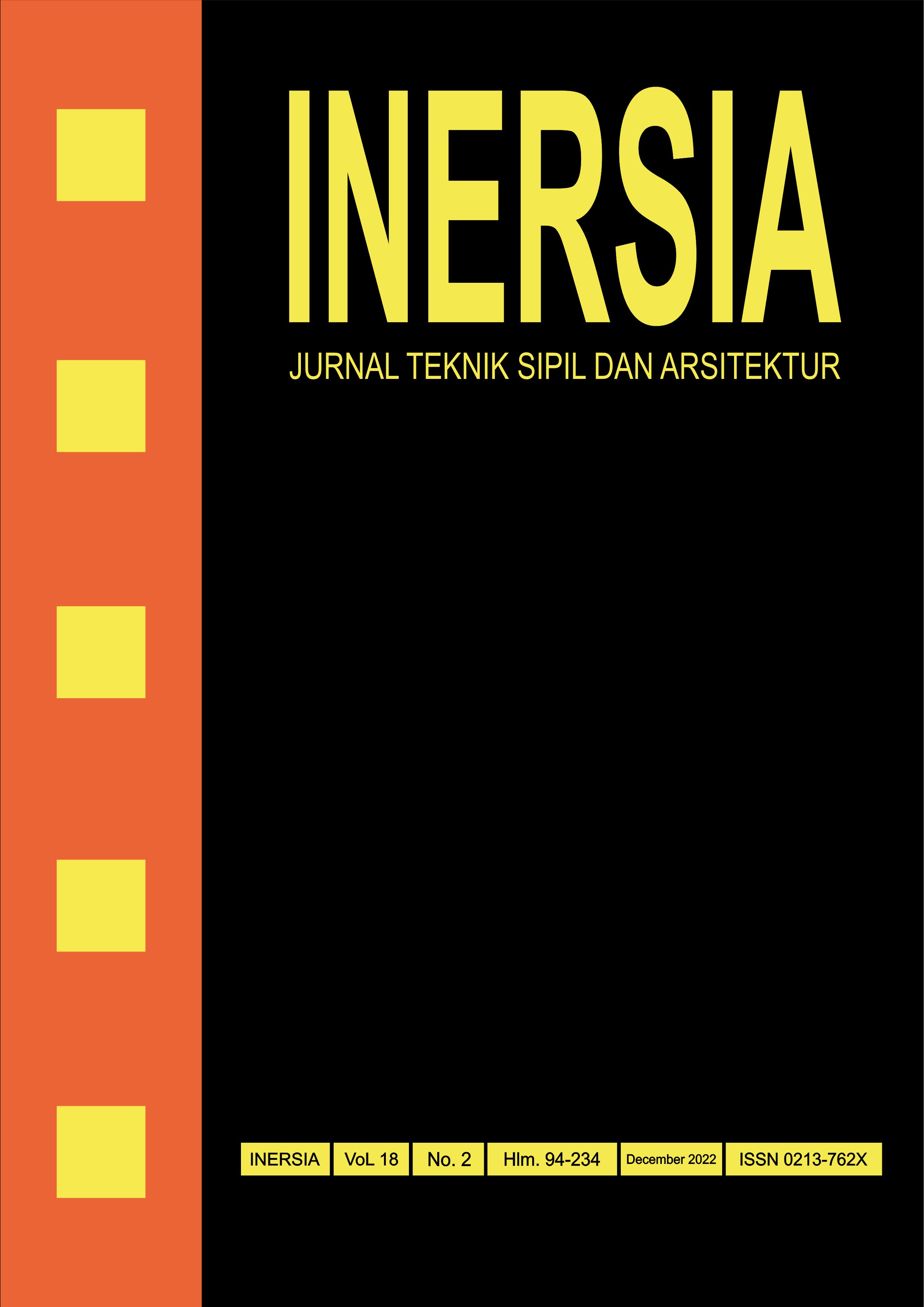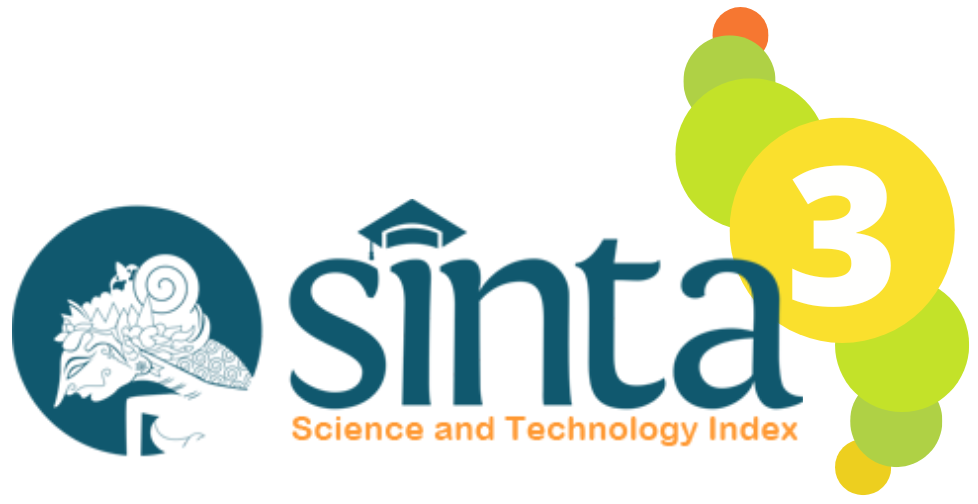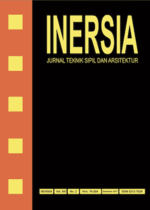Surface Runoff Analysis Using SCS-CN Method in Summarecon Serpong Area
DOI:
https://doi.org/10.21831/inersia.v18i2.53248Keywords:
land cover, surface runoff, SCS-CNAbstract
The increasing population is definitely in line with the rising demand for housing. One area with many residents is Tangerang Regency, Banten with a population growth rate of 5,85% per year. PT. Summarecon Agung Tbk. becomes one of the developers of an integrated area in Tangerang Regency in fulfilling housing's need. However, the wider the development of an area, it is parallel with the changes in land cover that significantly impact surface runoff. Therefore, this study aims to determine the surface runoff in the Summarecon Serpong area. The research method used is the Secondary Data Analysis (SDA) approach which requires several data; rainfall, land cover, and soil type. These data were then processed using Frequency Analysis to obtain design rainfall and continued to the SCS-CN Method to obtain surface runoff with the return period at 2 years, 5 years, 10 years, 20 years, and 100 years. The land cover in the Summarecon Serpong area was dominated by buildings, with the Hydrologic Soil Groups (KHT) in the form of Groups C and D. The calculation of the Composite Curve Number (CNk) value based on land cover and Hydrologic Soil Groups were 88,89, while the calculation of direct runoff using the SCS CN Method with a return period of 2 years, 5 years, 10 years, 20 years, and 100 years respectively were 77 mm, 121 mm, 154 mm, 188 mm, and 275 mm. The lowest surface runoff occurred on land cover in the form of green open land with Hydrologic Soil Group C, and the highest surface runoff occurred on land cover in the form of water bodies. This analysis indicates that focusing on the green open land in the Summarecon Serpong area can reduce surface runoff while increasing infiltration to maintain the sustainability hydrologic system.
References
Badan Pusat Statistik Kabupaten Tangerang, "Kabupaten Tangerang Dalam Angka," Badan Pusat Statistik. Kabupaten Tangerang, 2022
Dinas Kependudukan dan Pencatatan Sipil Kabupaten Tangerang, "Statistik Kependudukan Kabupaten Tangerang Tahun 2020," Dinas Kependudukan dan Pencatatan Sipil Kabupaten Tangerang. Kabupaten Tangerang, 2020.
Indrianawati & D. M. Nadhiyah, "Dampak Pertumbuhan Penduduk Terhadap Alih Fungsi Lahan Pertanian di Kabupaten Cirebon Tahun 2010-2016," Jurnal Online Institut Teknologi Nasional, vol. 1, pp 21-29. 2019.
V.T. Chow, I. Maidment, & L.W. Mays, "Applied Hydrology," McGraw Hill. New York, 1988.
C. Asdak, "Hidrologi dan Pengelolaan Daerah Aliran Sungai," Gadjah Mada University Press. Yogyakarta, 2010.
B.F.H. Sumaryatno, "Penggunaan Metode Soil Conservation Service–Curve Number (SCS–CN) dalam Menduga Limpasan Permukaan di DAS Ciliwung," Skripsi, Bogor: Institut Pertanian Bogor. 2014.
B. Triatmodjo, "Hidrologi Terapan," Beta Offset. Yogyakarta, 2008
A. K. Sentosa, C. Asdak & E. Suryadi, "Estimasi Volume Limpasan dan Debit Puncak Sub DAS Cikeruh Menggunakan Metode SCS-CN (Soil Conservation Service-Curve Number)," Jurnal Keteknikan Pertanian Tropis dan Biosistem, vol 9(1). 2021.
K. Lin, F. Lv, L. Chen, V. P. Singh, Q. Zhang & X. Chen, "Xinanjiang model combined with Curve Number to simulate the effect of land use change on environmental flow," Journal of Hydrology, vol 519. 2014.
K. X. Soulis & J. D. Valiantzas, "SCS-CN parameter determination using rainfall-runoff data in heterogeneous watersheds–the two-CN system approach," Hydrology and Earth System Sciences, vol 16(3). 2012.
A. K. Hidayat, P. Irawan, Hendra, J. Ikhsan, S Armadja & N. K. Sari, "Analisis dan Pemetaan Limpasan Permukaan di DAS Citanduy Hulu dengan Metode SCSCN," Jurnal Rona Teknik Pertanian, vol 14(1). 2021.
A. Kumar, S. Kanga, A. K. Taloor, S. K. Singh & B. Durin, "Surface runoff estimation of Sind river basin using integrated SCS-CN and GIS technique," HydroResearch, vol (4). 2021.
J. K. Nasjono, S. Utomo & U. D. B. Marawali, "Keandalan Metode Soil Conservation Services-Curve Number Untuk Perhitungan Debit Puncak DAS Manikin," Jurnal Teknik Sipil, vol 8(2). 2018.
Downloads
Published
How to Cite
Issue
Section
License
Authors who publish with INERSIA journal agree to the following terms:
- Authors retain copyright and grant the INERSIA journal right of first publication with the work simultaneously licensed under Creative Commons Attribution License (CC BY 4.0) that allows others to share the work with an acknowledgment of the work's authorship and initial publication in this journal.
- Authors can enter into separate, additional contractual arrangements for the non-exclusive distribution of the published version of the work (e.g., post it to an institutional repository or edit it in a book), with an acknowledgment of its initial publication in this journal.
- Authors are permitted and encouraged to post their work online (e.g., in institutional repositories or on their website) before and during the submission process, as it can lead to productive exchanges, as well as earlier and greater citation of published work.

INERSIA by https://journal.uny.ac.id/index.php/inersia was distributed under a Creative Commons Attribution 4.0 International License











